tif
Type of resources
Topics
Keywords
Contact for the resource
Provided by
Years
Formats
Representation types
Update frequencies
-
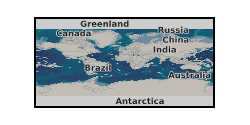
This dataset contains results from nanoindentation testing of five shale samples from the Horn River Basin (core from wells A100B/94 and D94A/94). The samples are from the following formations: A3 Fort Simpson, A6 Fort Simpson, D1 Muskwa, A16 Otter Park, and A20 Evie. The data is in two sets. Set 1 includes nanoindentation data from all samples, with grids conducted both parallel and perpendicular to the bedding plane. In Set 2, additional chemical analysis of select grids (on samples A3, A6 and A20) was undertaken using SEM/EDS. Both sets include the following tab-separated .txt files: grid_para.txt [Load-displacement-time data for each indent (parallel indentation)]; grid_para_summary.txt [Reduced elastic modulus, hardness and creep modulus for each indent (parallel indentation)]; grid_perp.txt [Load-displacement-time data for each indent (perpendicular indentation)]; grid_perp_summary.txt [Reduced elastic modulus, hardness and creep modulus data for each indent (parallel indentation)]. Set 2 also includes .tif files containing SEM images and EDS chemical analysis of the grids. The data has been filtered to remove indents which show 'pop-in' behaviour or time-displacement curves that do not conform to a logarithmic fit. ACKNOWLEDGMENT - The authors wish to thank the Natural Environment Research Council (NERC) for funding this research through the SHAPE-UK project (grant numbers NE/R018057/1, NE/R017840/1, and NE/R017565/1), which forms Challenge 3 of the UKUH (Unconventional Hydrocarbons in the UK Energy System) programme.
-

The borehole information pack from borehole GGC01, site 10 of the UK Geoenergy Observatories (UKGEOS) Glasgow facility. This intermediate data release pack from BGS contains core scan optical and X-ray images from the core scanning facility at BGS Keyworth. The cored, seismic monitoring borehole was drilled between 19 November and 12 December 2018 to 199m producing a core of 102 mm diameter. The borehole was wireline logged in December 2018 and a string of 5 seismometers were installed in February 2019. A range of fluid, water and core samples were taken during the drilling process. The borehole information pack- intermediate release contains a range of logs on the core as well as images of that core, these data were acquired in the first half of 2019. More information is available in the accompanying metadata report http://nora.nerc.ac.uk/id/eprint/525009.
-

This dataset contains data from a marine geophysical survey which took place on 1st October 2014 in the area of Ardmucknish Bay on board the RV White Ribbon. The survey was carried out by the British Geological Survey (BGS). This was a follow up survey to the previous work carried out in this area (Surveys: 2011/4 and 2012/5, 2012/7) to monitor changes in the geometry of gas charged sediments. QICS (Quantifying and monitoring potential ecosystem impacts of geological carbon storage) was a scientific research project funded by NERC; its purpose was to improve the understanding of the sensitivities of the UK marine environment to a potential leak from a carbon capture storage (CCS) system. Sub bottom seismic profiling data were collected using an Applied Acoustics surface tow boomer (STB). Webpage www.bgs.ac.uk/QICS/.
-
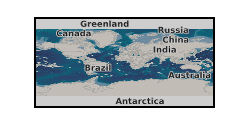
Samples are dunites, harzburgites and pyroxenites with variable proportions of chromite from the Cabo Ortegal collection of the late Prof Hazel Prichard, that is held at Cardiff University. Data were acquired during 2021 and 2022. Folders include: reflected light microscopy images of various sulfide minerals and mineral textures in thin section; element maps and backscattered electron images of areas and selected complete thin sections; and metadata (time-resolved analysis spectral data) for laser ablation ICP-MS analysis of sulfide minerals. Petrographic assessment by element mapping used a Zeiss Sigma HD Field Emission Gun Analytical Scanning Electron Microscope (A-SEM) equipped with two Oxford Instruments 150 mm2 Energy Dispersive X-ray Spectrometry (EDS) detectors at the School of Earth and Environmental Sciences, Cardiff University. Operating conditions were set at 20kV and aperture size to 120 µm, with a nominal beam current of 4 nA and working distance of 8.9 mm. Using Aztec software, maps were acquired at 100 to 150 x magnifications, with resulting pixel sizes ranging from 10 to 22 µm, depending on the resolution of acquired spectral images. Laser-ablation ICPMS analyses were performed using a ESI UP213 laser system coupled to a Thermo iCAPRQ ICP-MS system at the School of Earth and Environmental Sciences, Cardiff University. The data were gathered to understand the concentrations of precious and semi-metal trace elements and their likely mineral forms in the various Fe-Ni-Cu sulfide minerals.
-
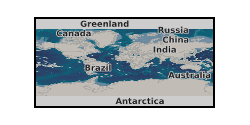
These files contain data for microscopy and mineral analyses on Fe-Ni-Cu sulfide minerals in the upper mantle and lower crust of the Kohistan arc system. Samples are dunites, harzburgites and pyroxenites with variable proportions of chromite from the Kohistan collection of Prof Brian Windley, that is held at Leicester University. Data were acquired during 2017 and 2018. Folders include: reflected light microscopy images of various sulfide minerals and mineral textures in thin section; maps and backscattered electron images of areas of thin sections; and metadata (time-resolved analysis spectral data) for laser ablation ICP-MS analysis of sulfide minerals. Laser-ablation ICPMS analyses were performed using a ESI UP213 laser system coupled to a Thermo iCAPRQ ICP-MS system at the School of Earth and Environmental Sciences, Cardiff University. The data were gathered to understand the concentrations of precious and semi-metal trace elements and their likely mineral forms in the various Fe-Ni-Cu sulfide minerals. Collected under the From Arc Magma to Ore System (FAMOS) Project.
-
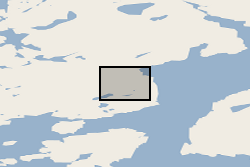
Scanned and annotated thin sections, in plane-polarised and cross-polarised light. Derivative statistical data for mineral grainsize and spatial distribution. Younger Giant Dyke, Tugtutoq, South Greenland.
-

The Java Trench was surveyed with a Kongsberg EM 124 gondola-mounted to the hull of the 225-foot DSSV Pressure Drop. The survey was conducted over the course of two weeks – March 26th – April 9th, 2019. The data meet the requirements for IHO Special Order standards.
-
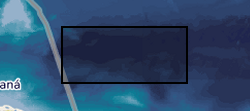
The Brownson Deep area of the Puerto Rico Trench was surveyed with a Kongsberg EM 124 gondola-mounted to the hull of the 225-foot DSSV Pressure Drop. The survey was conducted over the course of two days – December 18-19, 2018. The data meet the requirements for IHO Special Order standards.
-
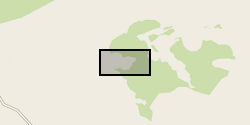
Scanned and annotated thin sections, in plane-polarised and cross-polarised light. Derivative statistical data for mineral grainsize and spatial distribution.
-
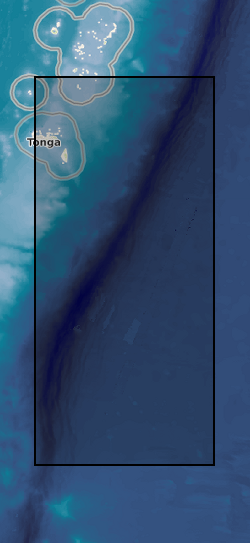
The Tonga Trench was surveyed with a Kongsberg EM 124 gondola-mounted to the hull of the 225-foot DSSV Pressure Drop. The survey was conducted over the course of two weeks – May 29 – June 6, 2019. The data meet the requirements for IHO Special Order standards.
 NERC Data Catalogue Service
NERC Data Catalogue Service